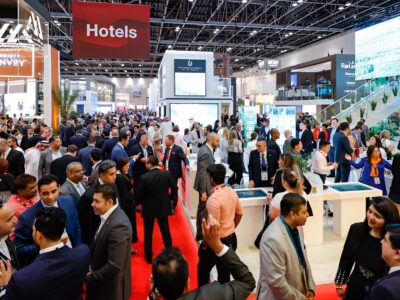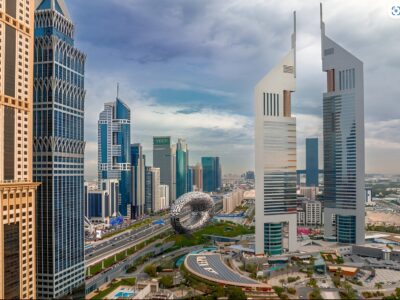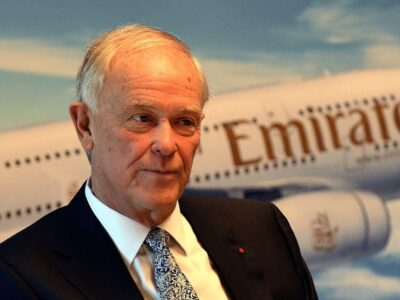
At a ministerial conference, the changing dynamics of tourism investment and finance were discussed (Photo: ATM)
A power-packed session of an all-woman panel at the ongoing Arabian Travel Market 2022 here at Dubai highlighted the key role that could be played by the global tourism industry in empowering women, notably integrating them into the formal economy by promoting the hiring of women in the travel and hospitality industry.
The panel discussion was vital in the light of several reports from around the world that have highlighted that the pandemic had hurt women in a disproportionate manner and that many more women had seen job losses or pay cuts than their male colleagues. The reports also highlighted the fact that the reintegration of women back into formal economy was progressing at a much slower pace than for the males.
The panel discussed the situation of women particularly in the travel and hospitality industry in the GCC and Middle East and recommended several actions to be taken by the governments as well as corporate bosses including women bosses to bring the women back into the formal economy through aggressive hiring.
Meanwhile, the expectations of various tourism boards from around the world about the pace, depth and width of a recovery varied sharply as India Outbound discovered. While most Middle Eastern and notably the GCC destinations expect their recovery to pre-pandemic numbers to be completed within the next few years, some European destinations say they are looking more at timelines like 2024 and beyond.
Several of the destinations within the UAE for instance, be it the ATM hosts Dubai or neighbouring destinations like Ras Al Khaimah or the Yas Island, say they will meet and even beat the 2019 numbers this year itself. For this, they are all unanimous about the significant role that the Indian market would have to play in bringing the numbers back. For instance, Yas Island is hoping a high double digit growth in the number of Indian tourists, who already account for over 20 pc of the total tourist arrivals in the entertainment-driven island destination.
It is not for nothing that Yas Island is hosting IIFA Awards next week and its signing up of Bollywood star Ranveer Singh needs to be seen in that light. Similarly, Ras Al Khaimah has pitched a 50 pc growth in number of arrivals from India this year to enable it to match the 2019 numbers by the end of 2022.
However, a few other destinations, notably the European countries, were more sanguine about their prospects for this year and the role that Indian tourists could play in boosting their recovering industry. Both Italy and Poland expect that for this year, the recovery would be driven largely by intra-European movements and even the high-rollers like the US travellers would perhaps stay away due to the ongoing war in Ukraine.
While Poland and Italy recognise the role that Indian tourists could play in boosting their tourism industry, but they say that the real numbers from India would come next year at the earliest. However, despite that neither Italy nor Poland or any other destination for that matter is looking away from India. All them are planning their strategies and final approach for the Indian market, which was definitely one of their key emerging or at least potential market on their bucket list of to-do destinations.
Meanwhile, at a ministerial conference, the changing dynamics of tourism investment and finance were also discussed.
Ahmad Belhoul Al Falasi, Minister of State for Entrepreneurship and SMEs & Chairman of Emirates Tourism Council of the UAE, said that an equitable recovery strategy in which the whole tourism and travel ecosystem benefits is vital. He also highlighted the new role of the Middle East and the UAE as a financial hub for future worldwide tourism investment. “For the UAE hospitality accommodation sector, investment in rooms and keys remains a primary focus as evidenced by a 5 pc growth in the number of rooms compared to 2019 levels, with a variation of service levels and accommodation type. However, while the big-ticket FDI will continue to grow in terms of rooms, from the service side, we see a lot of venture capital deployed on technological solutions for tourism. As the customer demand for elevated tourism experiences continues to evolve, we see technology as an important investment area in the future. So, while recovery is going well, we need to be mindful of being equitable in our recovery to ensure that the whole ecosystem benefits,” Al Falasi told the gathering.
According to recent forecasts, the total contribution of the travel and tourism industry to the GDP of Middle East countries is expected to reach around USD 486.1 billion by 2028. Governments across the region are attracting hefty investments in their tourism industry, with Bahrain attracting USD 492 million of tourism capital investment in 2020, for example, and the Kingdom of Saudi Arabia earmarking USD 1 trillion to its travel and tourism sector through to 2030.




















